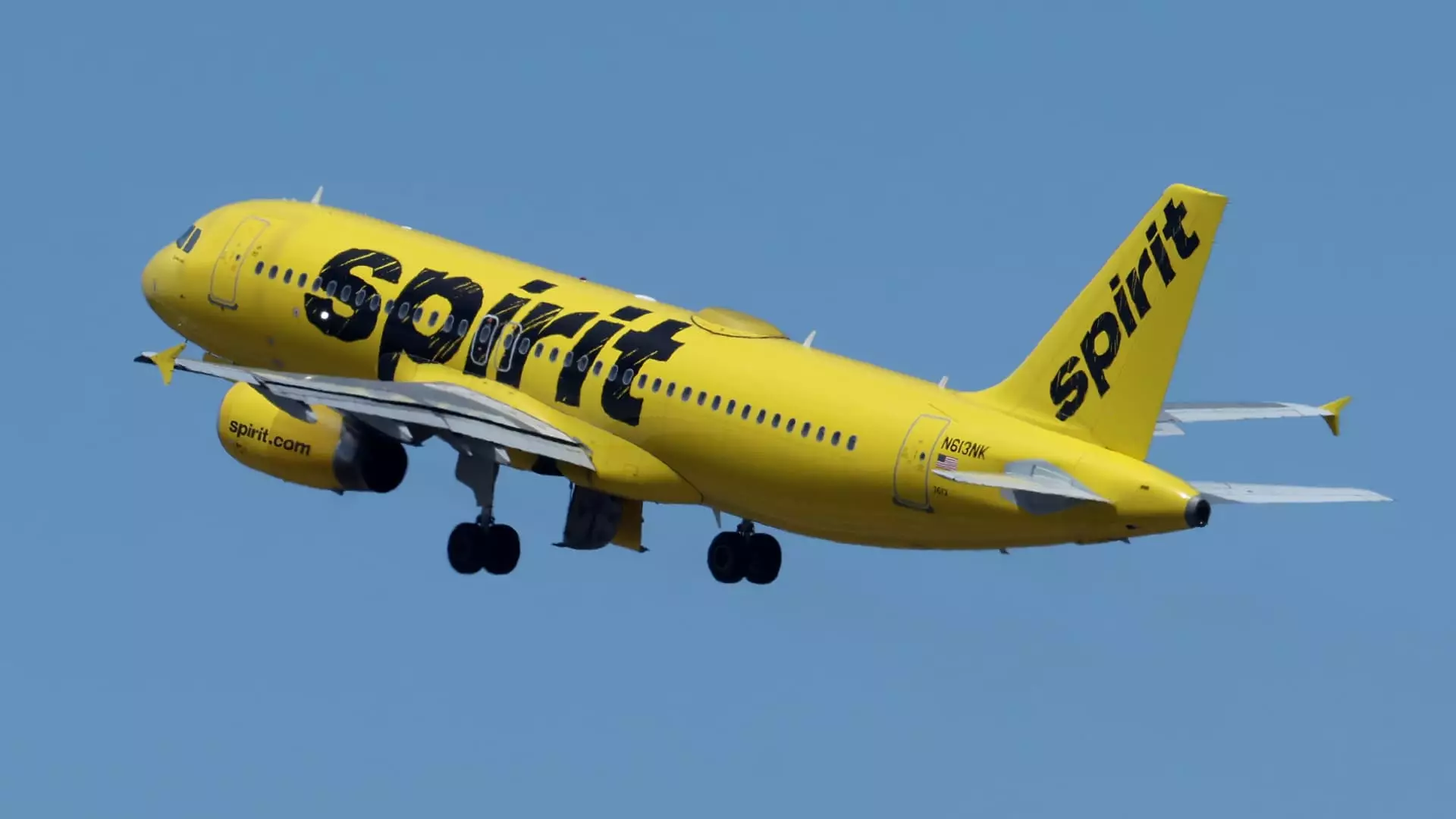The aviation industry, renowned for its cyclical highs and lows, has faced an unprecedented upheaval in recent years—culminating in sharp financial blows for even once-thriving low-cost carriers like Spirit Airlines. Emerging from bankruptcy in March, Spirit appeared poised for recovery, yet the subsequent months revealed a far more fragile reality. The airline’s faint optimism clashed starkly with economic realities: consumers holding onto their wallets amid a slowing travel rebound, and airline seat occupancy dipping to alarming lows. Despite faith in a quick turnaround, Spirit is now entangled in a web of financial distress, signaling how devastating external shocks and internal missteps can dangerously undermine strategic recovery efforts.
The airline industry’s ebb and flow are well documented, but Spirit’s recent plight underscores the peril of overestimating resilience. As rivals reported better-than-expected consumer spending and leisure travel rebounded more robustly, Spirit’s struggle to adapt and control costs became evident. Notably, even industry giants, traditionally more resilient, began issuing cautious or bearish forecasts, exposing the fragility across the sector, especially for smaller players with limited cushion. Spirit’s case exemplifies how strategic complacency—failing to execute necessary structural changes during bankruptcy—can haunt a firm long after emerging from financial distress. The airline’s recent warning of potential insolvency within a year demonstrates that initial recovery efforts may lack the depth or agility needed in a volatile environment.
Strategic Failures and Missed Opportunities
At the heart of Spirit’s challenges lies a critical misjudgment: underutilization of available restructuring tools. During its bankruptcy proceedings, the airline’s leadership appeared reluctant to make the hard decisions that could have stabilized its future—such as renegotiating aircraft leases, trimming capacity, or even selling off the fleet to reduce cash burn. Instead, Spirit opted for a superficial resolution, reaching a deal with bondholders that exchanged debt for equity without addressing core operational issues. In essence, the airline “knew the problem but failed to confront it,” as one industry expert put it. This inaction safeguarded short-term appearances but doomed the carrier to struggle once the market shifted against it.
The strategic shortfalls extend beyond bankruptcy maneuvers. Spirit committed the cardinal sin of overconfidence, forecasting profits of $252 million for the year—a number now rendered impossible by mounting losses exceeding that amount within months. This disconnect between projections and reality highlights a fundamental flaw: an overly optimistic outlook rooted in hope rather than solid operational fundamentals. Despite pushing ancillary services like premium seating and bundled fares to diversify revenue, these initiatives seem insufficient amidst a broader operational malaise. A significant portion of its routes suffers from no local competition, yet the airline finds itself unable to capitalize on this advantage due to financial constraints and operational inefficiencies.
Debt and Asset Management Failures
Spirit’s debt structure reveals a pattern typical of airlines that overreach during growth periods, only to face difficult detoxification later. The airline’s attempts to raise cash through asset sales—aircraft, real estate, leases—are symptomatic of desperation rather than strategic repositioning. Industry insiders suggest that Spirit’s management failed to leverage lease negotiations or aircraft disposals during bankruptcy, choices that could have significantly alleviated cash flow pressures. For example, the rising rental costs for Airbus A321neo engines—up 50% from 2019—are stark indicators of how operational costs have spiraled, yet the airline seemed unprepared to effectively respond.
The broader industry context compounds these issues. An oversupply of domestic routes, coupled with rising wages post-pandemic, has undercut the low-cost model that once made Spirit competitive. This perfect storm of operational headwinds underscores that mere asset sales or cost-cutting are insufficient strategies; comprehensive, aggressive restructuring was needed but largely missed. The widespread industry trend sees lessors hounding airlines for aircraft—an ominous sign of deteriorating market confidence—further constraining Spirit’s options and evidencing its weakened negotiating position.
Wider Implications and the Road Ahead
What makes Spirit’s predicament particularly instructive is its reflection of a broader industry dilemma: the delicate balance between survival and strategic decay. Airline experts suggest that while the airline may endure—albeit in a diminished or restructured form—the risk of total collapse remains tangible. The airline’s fragile liquidity position, coupled with union-led furloughs and workforce anxieties, paints a picture of a company teetering on the brink.
Moreover, Spirit’s ongoing efforts to reinvent itself through premium products and asset disposals underscore a recognition that its legacy low-cost model is no longer sufficient. Yet, these initiatives appear reactive rather than proactive, risking further delays that could erode consumer trust and operational efficiency. The debate shakes down to one of whether Spirit has squandered critical opportunities—failing to leverage bankruptcy protections to enact meaningful change—and whether its current leadership can pivot decisively before it’s too late.
The airline industry’s recent history is filled with cautionary tales of firms that overreach and underestimate the importance of strategic execution. Spirit’s story reinforces that resilience in aviation is not merely about emerging from bankruptcy but about fundamentally transforming business models in alignment with market realities. Success hinges on proactive management, decisive cost restructuring, and a clear-eyed assessment of operational strengths and weaknesses—areas where Spirit’s recent actions suggest it still has much to learn.
This narrative is a stark reminder that in the turbulent skies of commercial aviation, complacency is the enemy, and agility is the only true lifeline.


Leave a Reply